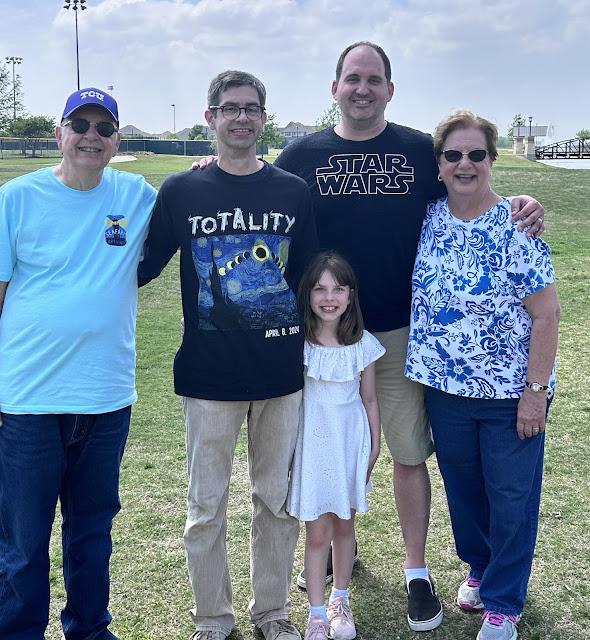What to bring to the observing site
When you're at the eclipse site, it's a good idea to be prepared, so that you can make the most of the eclipse experience.
Here is a list of suggested things to bring:
Proper eye safety viewers (see my other posts about this) (remember that totality is safe to look at (but ONLY that phase, and ONLY when the Sun is completely blocked out.))
Something with lots of small holes in it (kitchen colander, for example)- you can turn your back to the Sun and project dozens of eclipse images onto the ground
Sweater or jacket (the temperature drops leading into totality)
Hat
Pencil and notebook (for sketches of the eclipse, and writing down your feelings during and after)
Medicine/Pain reliever: A headache, stomachache or muscle aches can come up at any time. Be prepared for that possibility.
First aid kit
Bug Spray (if there’s a lot of optical equipment around, be careful where you spray it)
Sunscreen
Food/ drinks- make sure you stay hydrated! Lots of water. Also, you may or may not be able to eat lunch at the observing site. At the very least, bring good snacks (not junk food) to eat so that you’re not hungry as totality approaches. Don’t forget that you may be in traffic for a long time getting back to your home or hotel.
Chairs and tables
Umbrellas (for shade!- hopefully you won’t need them for other reasons!)
Checklist of what to look for (there’s A LOT!)- I’ll post one on this blog soon.
Other things to do- You’ll likely be on site before the eclipse begins. From then, and even during the early stages of the partial eclipse, the pace may seem rather slow. Bring a book to read, go for a walk, play a game, throw a ball around (if there’s not too much equipment around) - or just chat with others there. You’re about to share an incredible experience together!
Camera- you can take pictures of the eclipse if you want (make sure you use proper protection during the partial phases)- don’t spend too much time taking pictures during totality. You can use the camera to document your activities and family/friends who are with you on that day. More tips on eclipse photography on a later post.
Audio recorder (or a video camera)- you’ll want to make sure that you record your audio reactions to totality. See the other eclipse videos on this blog for examples of that.
Extra batteries and memory cards
Electrical tape, or anything dark- to cover the flash of the cameras around you. People may not remember to turn their flashes off, or know how to do it.
Also: be sure to fill your gas tank- ideally, 1-3 days before the eclipse. There will be lots of visitors to the path of totality!
Another discussion on the same topic:
Feel free to comment below on anything that I missed. Happy viewing!

Great suggestions!
ReplyDelete